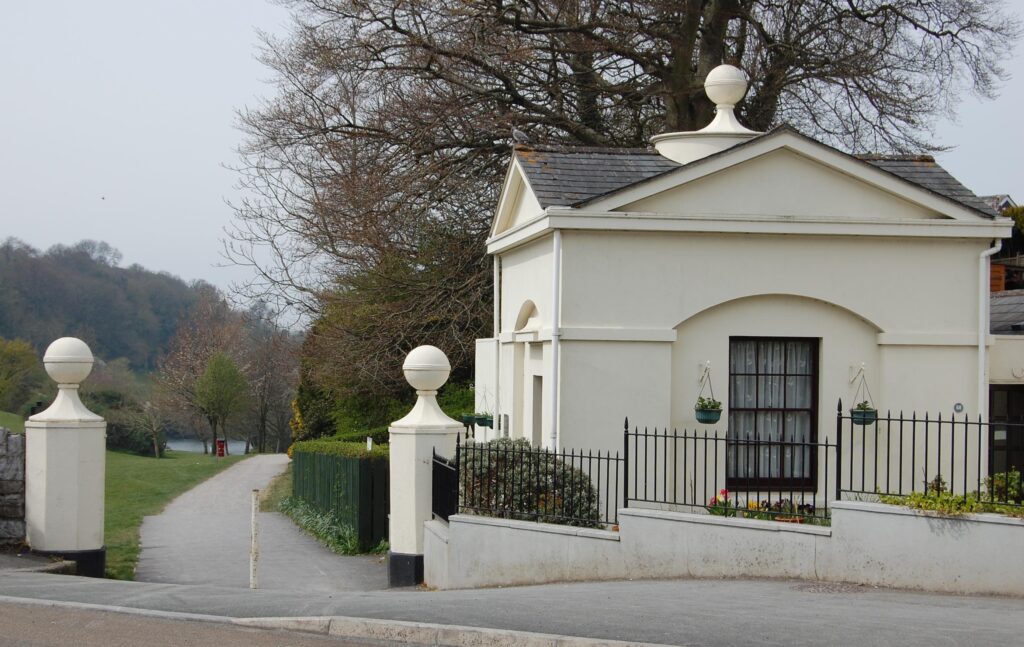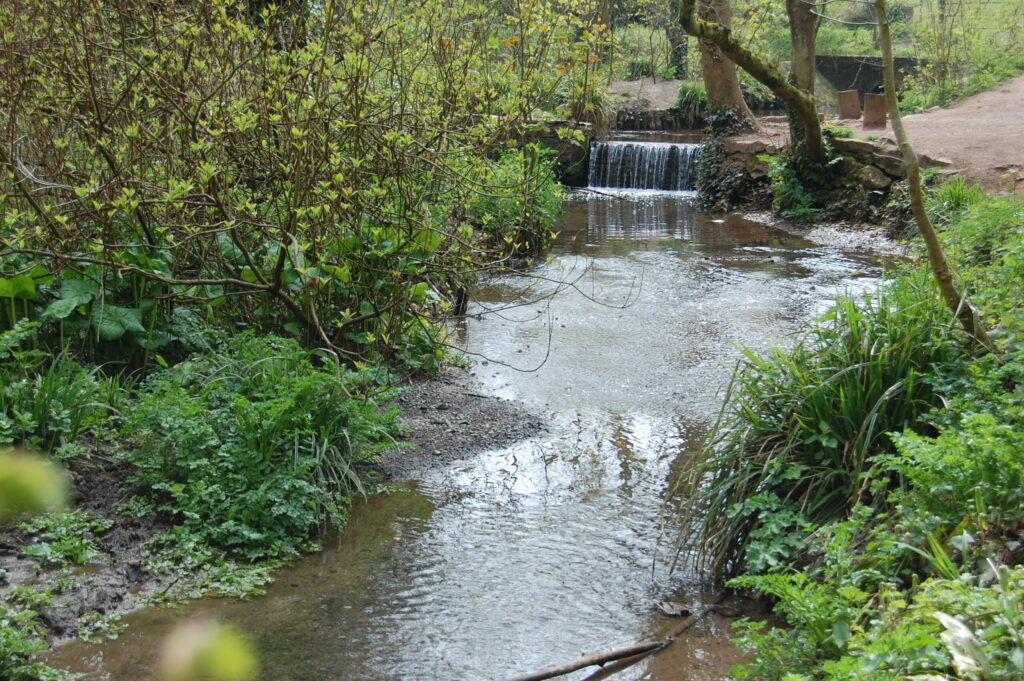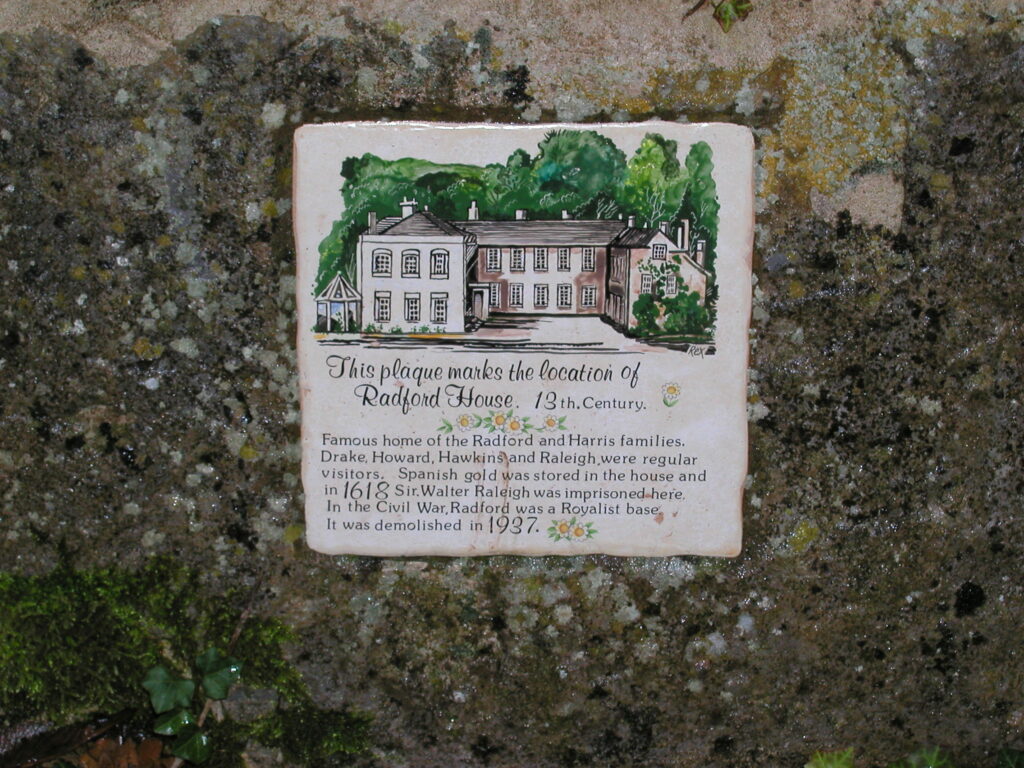With thanks to Kevin Warley for his Radford Walk and Talk of the 5th December 2009.
The following notes are provided for the purpose of interest only, as recalled by a member of the group attending the walk. Accuracy cannot be guaranteed.
Part 1.
In 1973 Plymouth City Council applied for listed building consent to demolish the Lodge (at the entrance to Radford Park) to sell the land for housing.
1234567789090

There was a huge public outcry and after a long battle the Council were refused permission. The Arboretum was started 1974 coinciding with the worst drought in British history.
The ornamental park is the last remaining part of the North Park of (what was) Radford House. Its main claim to fame is the duck ponds where the (Harris) family came for rest and recuperation on their way to the Boat House, to make their way into Plymouth. As you can imagine there were no safe roads into Plymouth in those days. No Laira Bridge. To go to Plymouth you had to cross by water or go all the way up to Plympton, which was the main route into Plymouth.


The group walked over to the main site of where Radford House once stood (across the road from Radford Dip) near the Beckly Centre. A plaque is all that remains to mark where the house once stood. 
Radford House of the Radford Estate was demolished in 1937. The house is mentioned in many documents preceding the Doomsday Book. The Radford Estate was a small enclave sandwiched between the estates of the Duke of Bedford and the Earl of Morley (Saltram House).
Once over 600 acres stretching to Goosewell and Staddiscombe and Radford Estate. The Harris family were bankers and during the Elizabethan period famous seafarers including Drake, Raleigh and Hawkins. When the seafarers returned from their travels the money and riches were deposited at Radford House before being divided up between Queen Elizabeth, themselves and the ‘hangers on’.
The big celebratory dinner, following the defeat of the Spanish Armada, was also held at Radford House although Queen Elizabeth never came to Devon. Sir Walter Raleigh was imprisoned here before he was taken to the Tower of London and eventually beheaded for Treason.
The house was originally a grand Tudor house and remodelled in the Georgian period to what it looked like at that time. It had a lot of formal gardens and there is a copy of the original sale brochure held in the City Library at Drakes Circus, which is well worth having a look at.
The sale of the house and majority of the park was bought by William Mitchell, who was cash-rich at the time having just sold Pomphlett Mill to the Co-operative Society. He then subdivided the land, selling little plots around Plymstock, Radford Park Road being one of the plots that were divided off. If you look at your deeds you will have either the Duke of Bedford or William Mitchell. William Mitchell died in 1930 addressing Devon County Council, leaving most of his money to various charities. A lot of his money went to the local Methodist church. His wife succeeded him until about 1945 when they were both buried at Plymstock Church graveyard.
Grandson retains a lot of family artefacts relating to the Harris estate. William Mitchell married late in life and when he died his son was not of age. Therefore the estate was run by trustees who were in disagreement and could not decide what to do. In this time the house fell to ruin and when it was demolished in 1937 it was completely inhabitable.
At some time we will have to rewrite the local history and leave a copy in the records office. If someone is willing to do this I am quite willing to assist.
Brian Steele